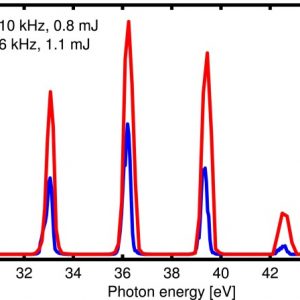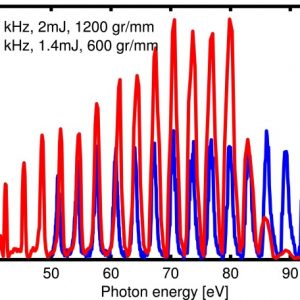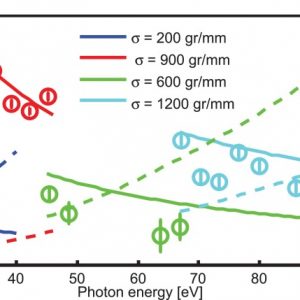In the process of high harmonic generation (HHG), several laser harmonics are generated collinearly with the laser beam, at odd multiples of the fundamental laser energy. We are interested in XUV harmonics, which requires a dedicated high vacuum beamline to be selected and refocused on the experimental end stations.
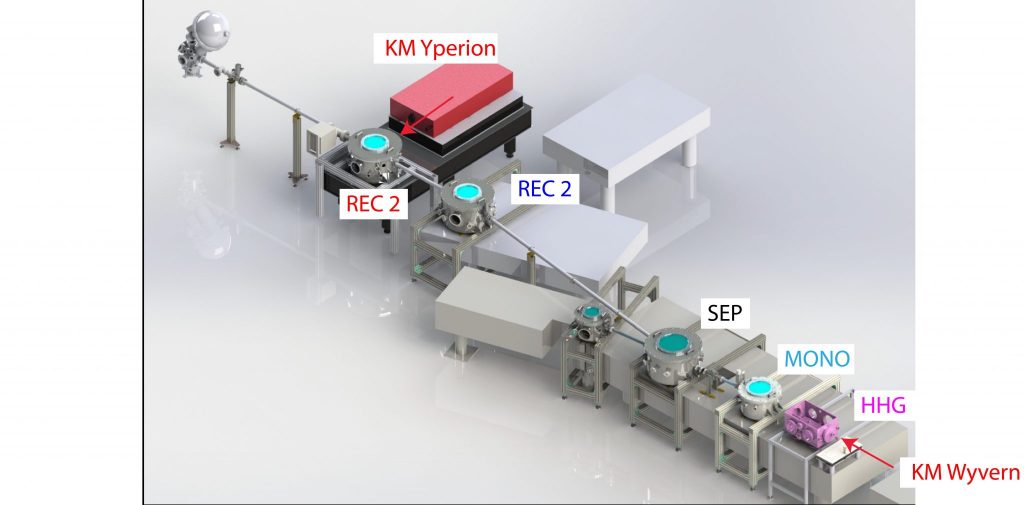
As shown in the pictures, the harmonics are produced in a gas target in the HHG chamber, followed by a monochromator (MONO).
In Harmonium, we use a special monochromator to select a well-defined XUV harmonic, designed to minimize the temporal broadening of our pulses. The monochromator was developed in collaboration with the CNR-IFN institute in Padova, Italy. The performance of the light source are shown in the graphs below:
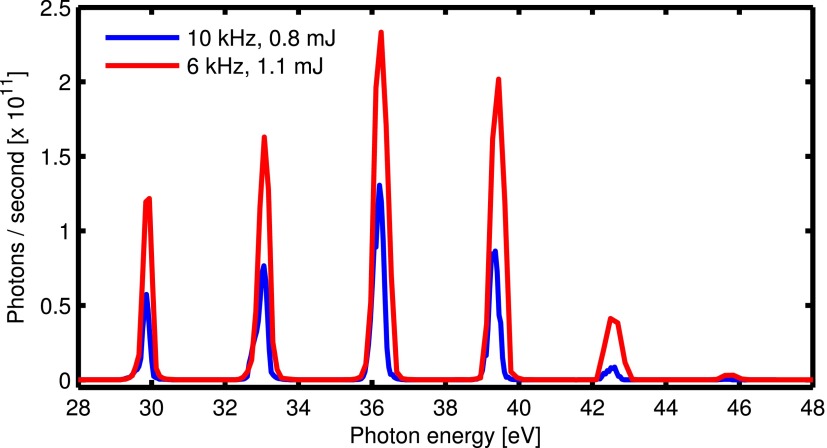
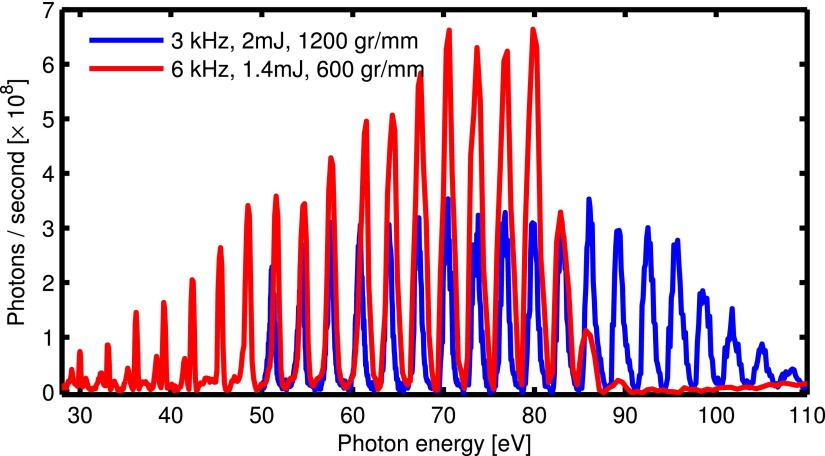
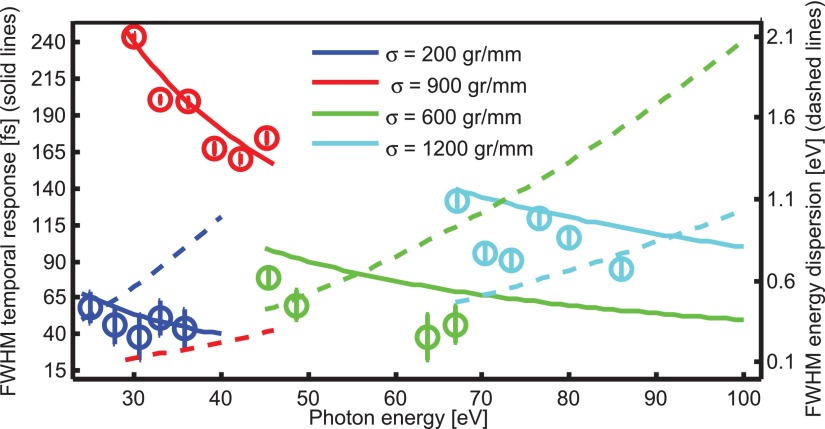
Harmonium can generate HHG either in Ar, with a monochromatize flux higher than 1011 ph/s around 37 eV, or in Ne , reaching photon energies higher with 100 eV, with a flux >108 ph/s.
Recently, in collaboration with the LUMES unit, a new light source has been integrated in our setup. The KM Yperion laser employes a new concept to generate narrow bandwidth (<30 meV) XUV pulses at around 10 eV, at a very high pulse repetition rate (1 MHz), ideally suited for ARPES experiments.
To learn more in detail the capabilities of Harmonium, please check the following publications and PhD theses.
Technical publications about Harmonium:
Please note that the publication lists from Infoscience integrated into the EPFL website, lab or people pages are frozen following the launch of the new version of platform. The owners of these pages are invited to recreate their publication list from Infoscience. For any assistance, please consult the Infoscience help or contact support.
Harmonium: A pulse preserving source of monochromatic extreme ultraviolet (30–110 eV) radiation for ultrafast photoelectron spectroscopy of liquids
Structural Dynamics. 2016. Vol. 3, num. 2, p. 023602. DOI : 10.1063/1.4933008.Please note that the publication lists from Infoscience integrated into the EPFL website, lab or people pages are frozen following the launch of the new version of platform. The owners of these pages are invited to recreate their publication list from Infoscience. For any assistance, please consult the Infoscience help or contact support.
Harmonium: An Ultrafast Vacuum Ultraviolet Facility
Chimia. 2017. Vol. 71, num. 5, p. 268-272. DOI : 10.2533/chimia.2017.268.PhD Thesis
Please note that the publication lists from Infoscience integrated into the EPFL website, lab or people pages are frozen following the launch of the new version of platform. The owners of these pages are invited to recreate their publication list from Infoscience. For any assistance, please consult the Infoscience help or contact support.
